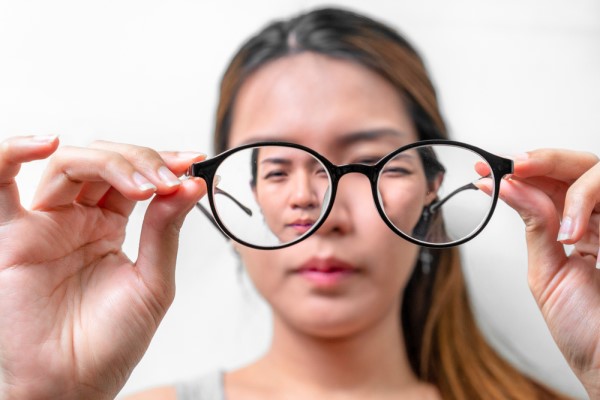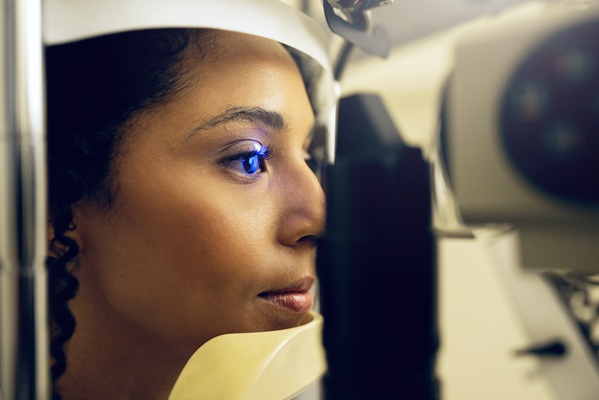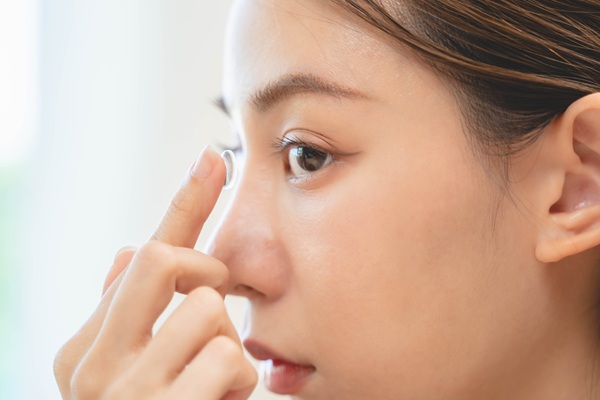Common Treatments and Eye Care for Myopia

Looking for information on myopia? Read on to learn more about this condition and how it is treated. According to the American Academy of Ophthalmology, myopia affects an estimated 25% of Americans. The good news is that treatment is simple and effective for most patients who are diagnosed with myopia (or a similar eye condition).
What is myopia?
Myopia, also called nearsightedness, is an eye-focusing disorder (rather than a disease) in which objects that are far away are less clear than they should be. This is usually caused by a refractive error in which the eyes do not focus light properly on the retina. The symptoms of myopia can include:
- Blurred vision
- Eyestrain
- Squinting
- Frequent headaches
Blurred and/or distorted vision are symptoms of myopia when viewing objects that are far away; difficulty viewing objects that are near is known as farsightedness (hyperopia). Specifically, myopia is generally caused by a cornea that is steeply curved. In some cases, an eye that is too long can cause myopia as well. Focusing on close objects and less time spent outdoors at a young age are believed to increase the risk of myopia.
An eye doctor can diagnose myopia during an in-office comprehensive eye examination. This may include a standard eye test (reading letters off of a chart from a specified distance). The doctor may also use a retinoscope and/or a phoropter to assist with the diagnostic process.
How can an optometrist treat myopia?
There are several treatment options that are available to patients who are diagnosed with myopia. The recommended treatment solution usually depends on the severity of the condition and the patient’s treatment preference. The four most commonly recommended treatments for myopia include eyeglasses, contact lenses, vision correction surgery, and orthokeratology.
Eyeglasses and contact lenses
Eyeglasses and contact lenses are the two most common types of treatment for myopia because they both provide a long-term and effective solution for patients. Eyeglasses and contact lenses both work by correcting refractive errors with the eyes. In simpler terms, they improve the patient’s vision and allow them to see objects that are farther away more clearly, which can improve their ability to function daily (e.g., improved driving).
There are pros and cons to both prescription eyeglasses and contact lenses. It is best to discuss the differences of each option to determine which is most appropriate and convenient for you, along with discussing the possibility of vision correction surgery or ortho-k therapy (see below).
Vision correction surgery
Vision correction surgery, or refractive surgery, is a treatment option for many patients with myopia. This surgical procedure involves reshaping the cornea with a laser to adjust the way that light travels through it. The most commonly performed refractive surgery is the laser-assisted in situ keratomileusis procedure, more simply referred to as LASIK.
Orthokeratology (ortho-k)
Orthokeratology, also called ortho-k for short, is a lesser-known treatment solution for myopia, but it can be incredibly effective for many patients. This common myopia treatment involves the patient wearing a series of special contact lenses (they are harder than the average contact lens); these contact lenses flatten the cornea over time.
For many patients, the results of ortho-k are effective but only temporary as the cornea can slowly shift back to its original shape once treatment ends. There are also certain risks associated with ortho-k treatment as well, such as a higher risk of eye infection.
Atropine (low-dose)
Low-dose atropine is sometimes used in adolescents to slow the progression of myopia. It is a relatively newer form of treatment and prevention for myopia, but it can help to discuss the possibility of low-dose atropine with your or your child’s eye specialist.
When should I see a specialist for myopia diagnosis and treatment?
Myopia affects individuals of all ages. However, myopia is most commonly diagnosed in children between the ages of eight to 12. You should consider a visit to an eye specialist that can diagnose and treat myopia if you are having symptoms, especially if the symptoms are affecting your ability to function daily or your quality of life overall.
Are you having issues with your vision?
Here at our office, we offer eye care and treatments for myopia. If you have any symptoms of myopia, such as blurred vision when looking at distant objects, the need to squint consistently, and headaches (caused by eyestrain), then consult with us today and schedule a convenient time for your consultation visit.
Get more information here: https://www.texasoptical.net or call Texas Optical at (214) 771-7333
Check out what others are saying about our services on Yelp: Optometry in Dallas, TX.
Recent Posts
For those living with diabetes, undergoing a diabetic eye exam is one of the most important steps in protecting their vision and overall eye health. High blood sugar levels can lead to a range of complications, including conditions that damage the eyes over time. These exams help detect these issues before they become serious, allowing…
Contact lenses provide clear vision and convenience for individuals who prefer an alternative to eyeglasses. However, proper care and maintenance are essential to prevent infections, irritation, and eye damage. Neglecting hygiene practices can lead to serious eye conditions, including corneal ulcers and keratitis. Understanding how to clean, store, and handle contact lenses ensures long-term eye…
Maintaining eye health and preventing long-term issues is the result of consistent and quality vision care. Many people focus on overall wellness but may overlook daily habits that support healthy eyesight. However, taking simple steps each day can protect vision, reduce eye strain, and prevent future complications. By making eye health a priority, it is…
Prescription contacts provide vision correction, comfort, and convenience for those who do not want to wear glasses. However, caring for and wearing contacts takes some getting used to. Learning to insert, remove, and maintain them will help ensure a comfortable and safe experience.Not all contact lenses are the same, and choosing the right pair is…


